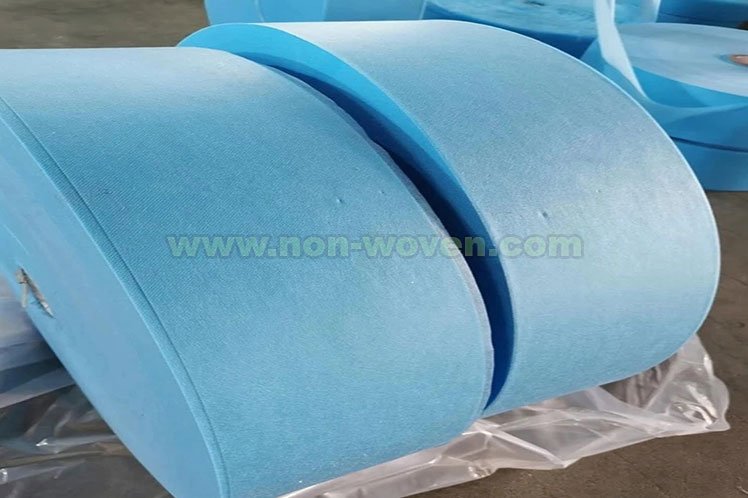Introduction
The SMS nonwoven fabric is made of spun bond and melt-blown fabric. The spun-bond fabric is made of PET or PP fiber, which is first spun into a web, and then the meltblown fabric is made of PP fiber. The two fabrics are laminated together through a heat-bonding or adhesive process.
The fabric is a new type of composite material with a wide range of applications. It is lightweight, breathable, and has good strength and durability. It is often used in medical and hygiene products, such as diapers, sanitary napkins, and surgical gowns.
The fabric is also used in a variety of other applications, such as filtration, insulation, and packaging. In this article, we will provide a comprehensive guide to understanding the SMS nonwoven fabric and its many uses.
What is SMS Nonwoven Fabric?
SMS nonwoven fabric is a type of composite material made of two layers of spunbond and one layer of meltblown fabrics. The spunbond fabric is made of PET or PP fiber, which is first spun into a web of fibers. The meltblown fabric is made of PP fibers that are heated and then cooled, forming a web of fibers. The two fabrics are then laminated together through a heat-bonding or adhesive process.
The result is a lightweight, breathable fabric with good strength and durability. It is often used in medical and hygiene products, such as diapers, sanitary napkins, and surgical gowns. It is also used in a variety of other applications, from filtration and insulation materials to packaging products.learn more(wikipedia)
The Benefits of SMS Nonwoven Fabric
SMS nonwoven fabric is a highly versatile material that is used in a wide range of applications. There are many benefits to using SMS nonwoven fabric, including its lightweight and breathable properties, good strength and durability, and its ability to withstand heat or chemicals. It is malleable and easy to form, making it ideal for creating complex designs.
Additionally, the two-layered design of the SMS nonwoven fabric offers a unique combination of properties such as air permeability, water repellency, and excellent barrier strength. Furthermore, the fabric is cost-effective; it is inexpensive and has a low environmental impact compared to other nonwoven fabrics. It is also recyclable and biodegradable, adding a layer of sustainability to its use.
The Various Applications of SMS Nonwoven Fabric
SMS nonwoven fabric is a highly versatile material with a wide range of uses. It is often used in medical and hygiene products, such as diapers, sanitary napkins, and surgical gowns. It is also used for filtration and insulation materials, as well as packaging products.
In addition, The fabric can be used in industrial applications such as protective clothing, car upholstery and window shades. The breathable nature of SMS nonwoven fabric makes it an ideal option for hygiene and medical applications. It is also popular in the food industry, as it is non-toxic and hypoallergenic and provides excellent protection for food products against moisture, oxygen, and other contaminants.
Additionally, its strength and durability make it suitable for applications such as geotextiles and geo-membranes.
The Challenges in the SMS Nonwoven Fabric Industry Despite the many benefits and uses of SMS nonwoven fabric, there are also several challenges associated with the industry. One of the primary challenges is the cost of production, as the SMS nonwoven fabric is more expensive than other fabrics.
Additionally, the fabric is susceptible to sunlight damage, meaning that it must be treated with special protective coatings to ensure long-term performance. The current market for SMS nonwoven fabrics is also limited due to their relatively high cost. Manufacturers also face the challenge of meeting stringent quality control requirements and ensuring that their product is compliant with existing regulations. Additionally, the increasing demand for sustainable materials has resulted in increased competition, as manufacturers must find ways to improve their product’s sustainability.
The Outlook for the SMS Nonwoven Fabric Industry
Despite the challenges, the outlook for the SMS nonwoven fabric industry is positive. As the demand for sustainable materials continues to grow, manufacturers are finding increasingly innovative ways to reduce their product’s environmental impact. Additionally, the technology used to produce SMS nonwoven fabrics is becoming more efficient and cost-effective, allowing manufacturers to produce high-quality fabrics at lower costs. The demand for medical and hygiene products is also expected to increase, as is the demand for packaging products and filtration materials. This will result in greater utilization of SMS nonwoven fabrics and continued growth in the industry.
Overall, the outlook for the SMS nonwoven fabric industry is positive, and manufacturers are expected to continue to innovate and develop new and improved products.

